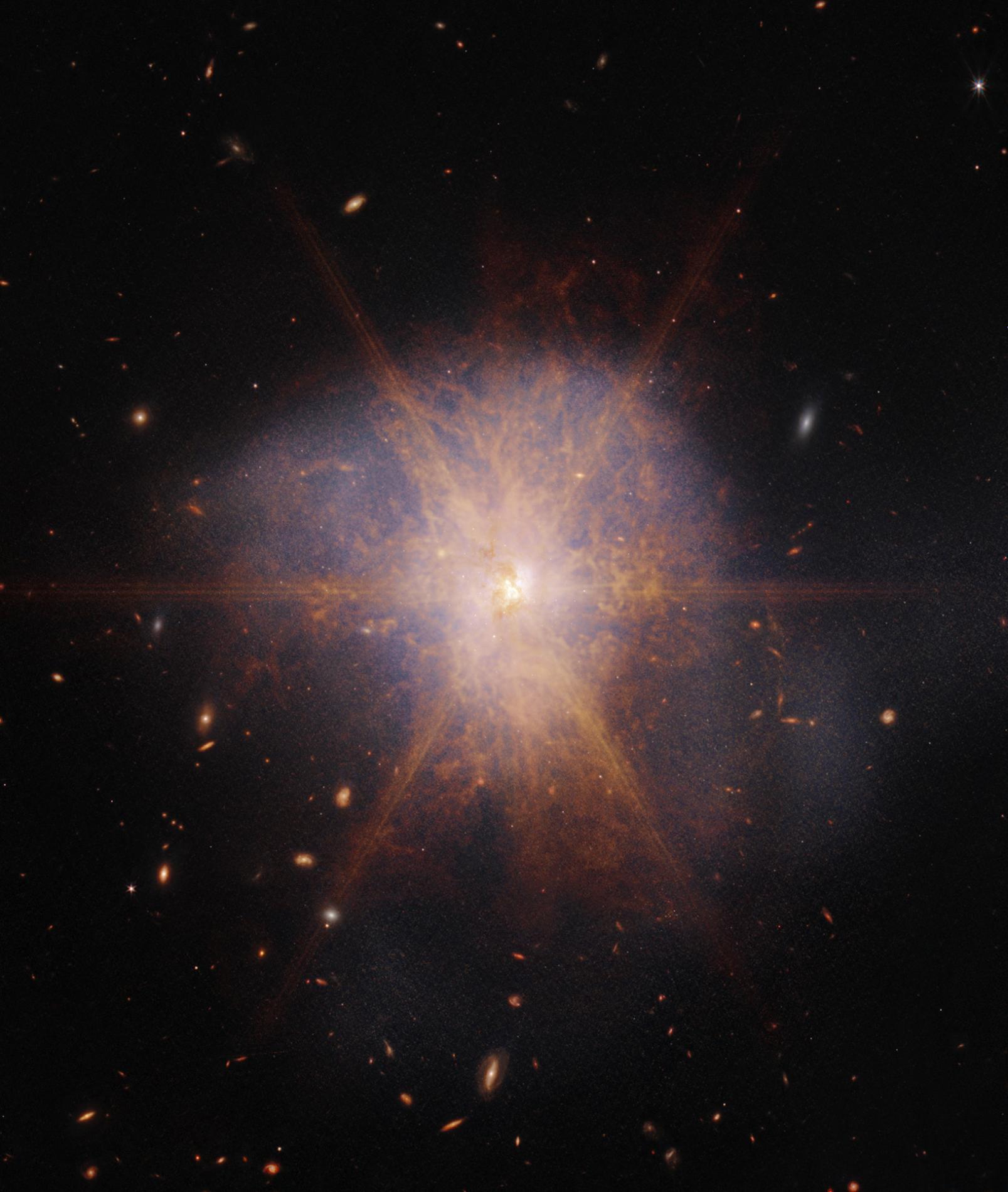Galaxies caught in the throes of chemical 'rejuvenation'
An IAA-CSIC team leads a pioneering study that reveals the crucial role of galactic mergers in the chemical evolution of Ultraluminous Infrared Galaxies.
Since the 1980s, a class of galaxies characterised by strong emission in the infrared - over a hundred billion times the luminosity of the Sun - and very low brightness in the visible and ultraviolet range has been known. These Luminous Infrared Galaxies (LIRGs) were later joined by Ultraluminous Infrared Galaxies (ULIRGs), with emission in the infrared range billions of times the Sun's luminosity. The excess infrared radiation in these galaxies is due to the presence of huge amounts of dust heated by intense bursts of star formation, as well as the possible presence of an active supermassive black hole in their nucleus. The light-absorbing capacity of such dust makes these galaxies complex to study in the visible and ultraviolet ranges, and requires observation with infrared telescopes. A team from the Instituto de Astrofísica de Andalucía (IAA-CSIC) has led a study published today in Nature Astronomy with very novel results that demonstrate the crucial role of galactic mergers in the chemical evolution of this type of galaxy.
"Luminous and ultra-luminous infrared galaxies are fundamental for understanding the complex picture of galactic evolution. They allow us to study extreme star formation rates in the nearby universe, similar to those found in the early stages of the Universe," explains Borja Pérez Díaz, researcher at the IAA-CSIC and first author of the paper.
The research team of the IAA-CSIC project "Starbursts in galaxies" has applied for the first time on a sample of LIGRs and ULIGrs galaxies a robust method of analysis that allows the abundances of chemical elements to be measured directly using the emission lines of ionised gas in the infrared range. These lines escape the absorption produced by the huge amounts of dust in these galaxies and allow us to reveal the physical conditions inside them.
The chemical elements, generated in the interior of stars and ejected into the interstellar medium by stellar wind processes or during the final stages of the stars' lives, are a very precise indicator of the evolutionary state of the galaxy. The more intense the star formation history is, the higher the abundance of heavy elements. Moreover, the presence of such atoms - such as carbon, oxygen, silicon or iron - in turn favours the formation of dust grains in the interstellar medium of galaxies.
One of the main results of this study shows that - unlike previously thought - the proportion of heavy elements in these high-IR-emission galaxies is not very different from those in other, less dusty galaxies. "This result would be consistent with the fact that most of the dust would have been created as a consequence of stellar winds caused by starburst episodes and the effects of the formation of active supermassive black holes, but greatly amplified by the interaction and merger of smaller external galaxies that convert the gas into new stars much more efficiently," says Enrique Pérez Montero, one of the co-authors of the study.

Image of the (U)LIRG galaxy Arp 220, part of the survey sample taken by the James Webb Space Telescope. Credit: NASA, ESA, CSA, K. Pontoppidan (STScI), A. Pagan (STScI)
" CAUGHT" IN THE MIDST OF FUSION BY DETECTING THEIR CHEMICAL 'REJUVENATION'
In addition, the IAA-CSIC team has detected within the sample a small number of galaxies with an exceptionally much lower abundance of heavy elements in the interstellar medium than expected for their mass and star formation rate. "These galaxies would have been observed just as they were undergoing chemical dilution caused by the inflow from the outside of huge amounts of gas with virtually no heavy elements during the merger process with other galaxies. The contribution of this new material explains the observed decrease in abundances, thus simulating a chemical rejuvenation, and in turn triggers star formation," says Borja Pérez Díaz, "This phase in the chemical evolution of galaxies would be very short in relative terms, as the new stars begin to synthesise heavy elements again and restore the abundances of the interstellar medium."
This study, which has used data from different infrared telescopes such as Spitzer (NASA) or Herschel (ESA), opens up new perspectives for understanding the formation and evolution of all galaxies in the early stages of the universe, in such decisive aspects as the relative role of star formation processes, the generation of dust, and the role of active nuclei and galaxy mergers.
“Merger-driven infall of metal-poor gas: a deep dive beneath the mass-metallicity relation” https://www.nature.com/articles/s41550-023-02171-x
Borja Pérez - bperez@iaa.es
Instituto de Astrofísica de Andalucía (IAA-CSIC)
Unidad de Divulgación y Comunicación
Emilio García - garcia@iaa.es - 640407445
Celia Navas - navas@iaa.es
https://www.iaa.csic.es // https://divulgacion.iaa.csic.es

